Ira Shavitt
Google Research, Tel-Aviv, Israel
Flood forecasting with machine learning models in an operational framework
Nov 04, 2021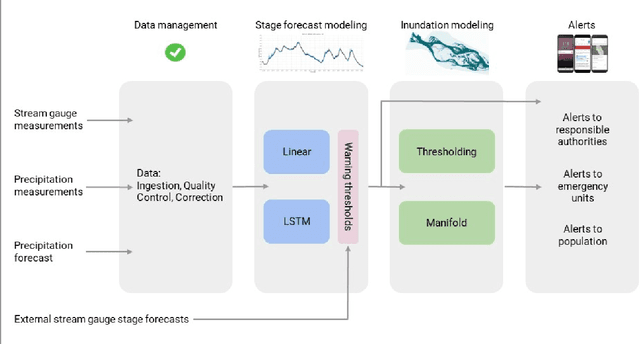
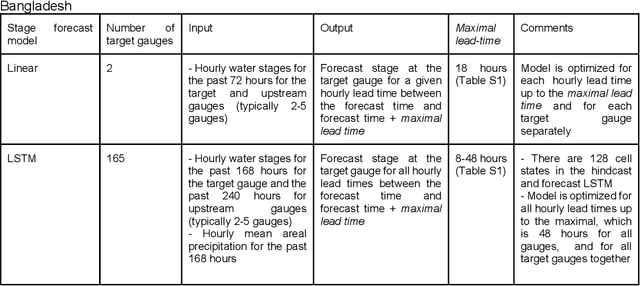
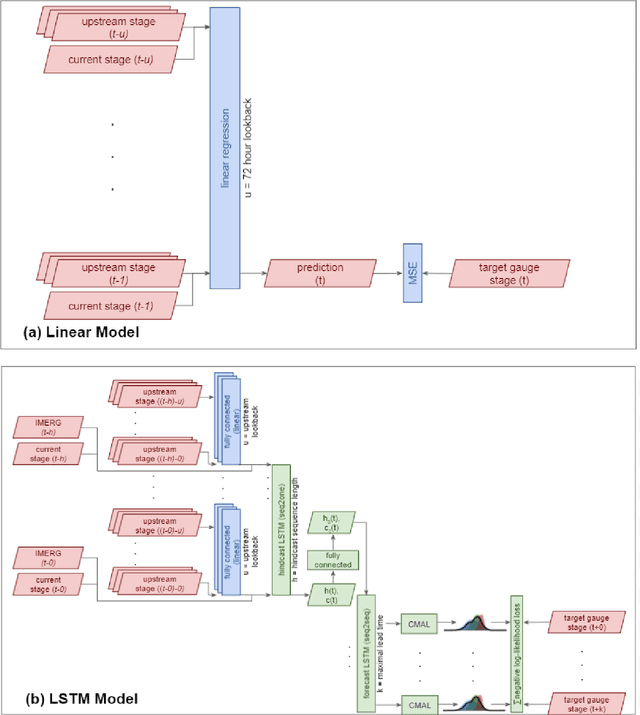
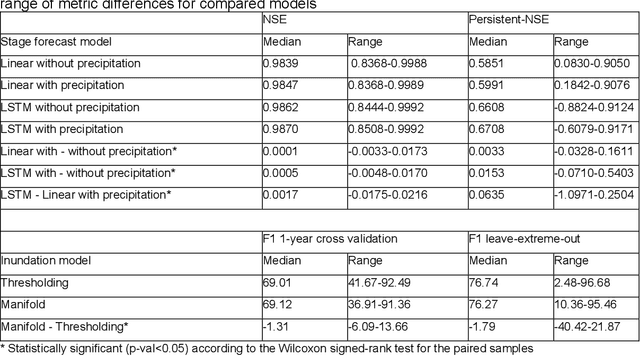
Abstract:The operational flood forecasting system by Google was developed to provide accurate real-time flood warnings to agencies and the public, with a focus on riverine floods in large, gauged rivers. It became operational in 2018 and has since expanded geographically. This forecasting system consists of four subsystems: data validation, stage forecasting, inundation modeling, and alert distribution. Machine learning is used for two of the subsystems. Stage forecasting is modeled with the Long Short-Term Memory (LSTM) networks and the Linear models. Flood inundation is computed with the Thresholding and the Manifold models, where the former computes inundation extent and the latter computes both inundation extent and depth. The Manifold model, presented here for the first time, provides a machine-learning alternative to hydraulic modeling of flood inundation. When evaluated on historical data, all models achieve sufficiently high-performance metrics for operational use. The LSTM showed higher skills than the Linear model, while the Thresholding and Manifold models achieved similar performance metrics for modeling inundation extent. During the 2021 monsoon season, the flood warning system was operational in India and Bangladesh, covering flood-prone regions around rivers with a total area of 287,000 km2, home to more than 350M people. More than 100M flood alerts were sent to affected populations, to relevant authorities, and to emergency organizations. Current and future work on the system includes extending coverage to additional flood-prone locations, as well as improving modeling capabilities and accuracy.
Towards Learning a Universal Non-Semantic Representation of Speech
Mar 02, 2020
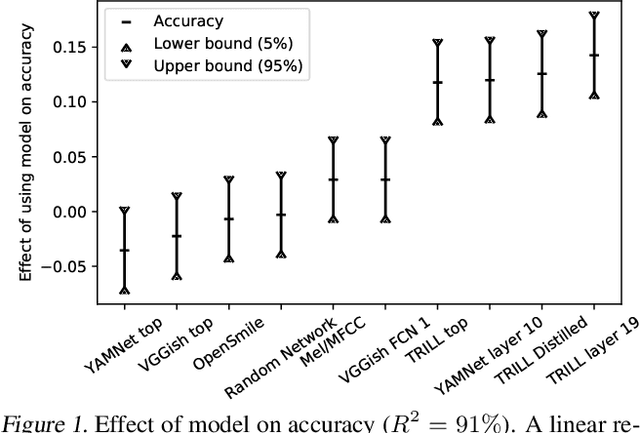
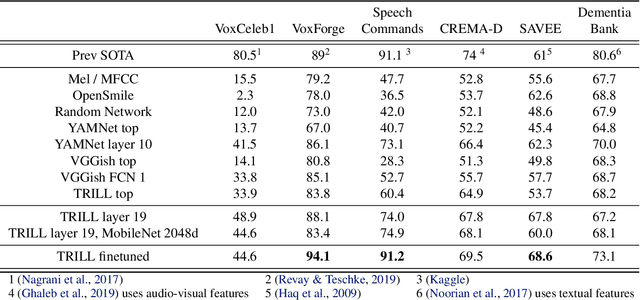
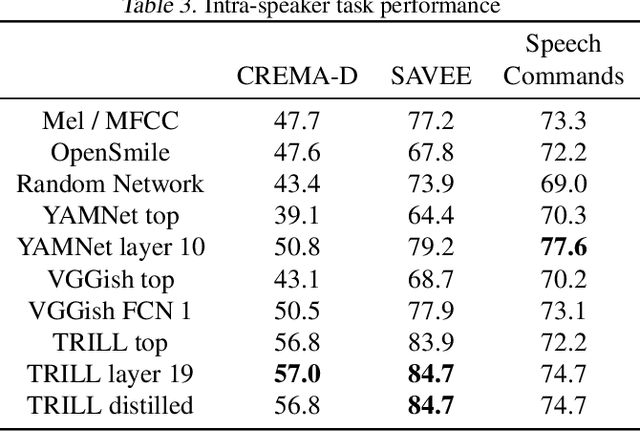
Abstract:The ultimate goal of transfer learning is to reduce labeled data requirements by exploiting a pre-existing embedding model trained for different datasets or tasks. While significant progress has been made in the visual and language domains, the speech community has yet to identify a strategy with wide-reaching applicability across tasks. This paper describes a representation of speech based on an unsupervised triplet-loss objective, which exceeds state-of-the-art performance on a number of transfer learning tasks drawn from the non-semantic speech domain. The embedding is trained on a publicly available dataset, and it is tested on a variety of low-resource downstream tasks, including personalization tasks and medical domain. The model will be publicly released.
Regularization Learning Networks: Deep Learning for Tabular Datasets
Oct 23, 2018



Abstract:Despite their impressive performance, Deep Neural Networks (DNNs) typically underperform Gradient Boosting Trees (GBTs) on many tabular-dataset learning tasks. We propose that applying a different regularization coefficient to each weight might boost the performance of DNNs by allowing them to make more use of the more relevant inputs. However, this will lead to an intractable number of hyperparameters. Here, we introduce Regularization Learning Networks (RLNs), which overcome this challenge by introducing an efficient hyperparameter tuning scheme which minimizes a new Counterfactual Loss. Our results show that RLNs significantly improve DNNs on tabular datasets, and achieve comparable results to GBTs, with the best performance achieved with an ensemble that combines GBTs and RLNs. RLNs produce extremely sparse networks, eliminating up to 99.8% of the network edges and 82% of the input features, thus providing more interpretable models and reveal the importance that the network assigns to different inputs. RLNs could efficiently learn a single network in datasets that comprise both tabular and unstructured data, such as in the setting of medical imaging accompanied by electronic health records. An open source implementation of RLN can be found at https://github.com/irashavitt/regularization_learning_networks.
 Add to Chrome
Add to Chrome Add to Firefox
Add to Firefox Add to Edge
Add to Edge